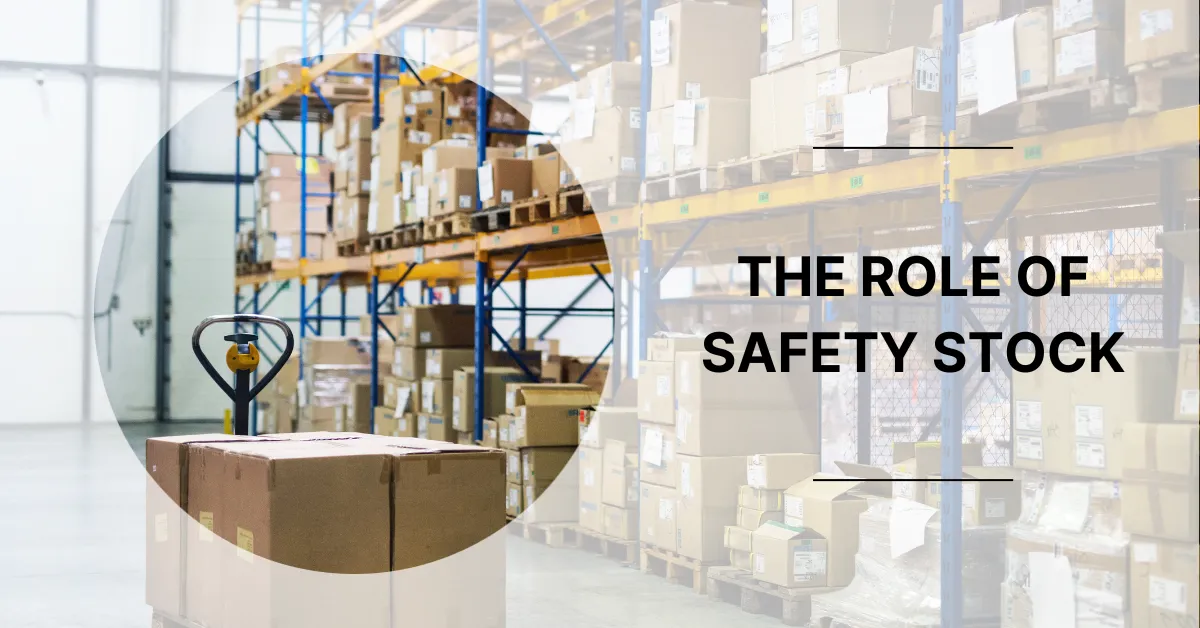
The Role of Safety Stock: When, Why, and How Much Buffer You Need
In the complex world of supply chain management, one key element that can make or break your operations is safety stock. It’s the buffer that protects businesses from unexpected demand fluctuations, delays, or supplier issues. But how do you know when you need it, why it’s crucial, and how much is enough without leading to costly overstocking? In this article, we’ll answer these questions and help you find the right balance for your supply chain.
What is Safety Stock?
Safety stock is the extra inventory you hold to prevent stock outs caused by unexpected demand spikes or supply chain disruptions. Think of it as a buffer that protects your business from the uncertainties of the supply chain, ensuring that operations continue smoothly even when the unexpected happens.
“Safety stock is your insurance policy against the unpredictable nature of supply and demand.”
Why Do You Need Safety Stock?
There are several reasons why safety stock is essential to a healthy supply chain:
Demand Fluctuations: Consumer demand is rarely predictable. A sudden increase in demand for a product can leave you scrambling if you don’t have enough stock on hand. Safety stock helps cover these surprises.
Supplier Delays: Even the most reliable suppliers can face unexpected delays due to transportation issues, production problems, or natural disasters. Safety stock allows your business to keep running without waiting on late shipments.
Lead Time Variability: The time it takes for goods to arrive can fluctuate, especially when dealing with international suppliers. Holding safety stock ensures that you can maintain operations even when lead times vary.
“Without safety stock, a single delayed shipment can throw off your entire production schedule.”
How Much Safety Stock Do You Need?
Here’s the tricky part: How do you calculate the right amount of safety stock? Hold too much, and you’re stuck with excess inventory, tying up capital and increasing storage costs. Hold too little, and you risk stock outs and lost sales.
The key is to find a balance by considering the following factors:
Demand Forecasting: The more accurate your demand forecasts, the less safety stock you need. If you have a history of stable demand, you can reduce the amount of safety stock. However, if demand is volatile, you’ll need a larger buffer.
Lead Time Variability: The greater the variation in lead times, the more safety stock you should carry. If your lead times are consistent, you can afford to hold less.
Service Level Goals: Your target service level (the percentage of orders you can fulfill without stock outs) will also impact how much safety stock you need. Higher service levels require more safety stock, but they also improve customer satisfaction.
“Safety stock should be enough to protect you from disruptions but not so much that it becomes a burden on your cash flow.”
When Should You Adjust Safety Stock Levels?
Safety stock isn’t a set-it-and-forget-it strategy. Your needs will change over time, and it’s important to regularly review your safety stock levels. Here are some triggers for adjustment:
Market Changes: If you’re entering a new market or expanding product lines, you may need more safety stock.
Supply Chain Changes: New suppliers, longer shipping routes, or changes in lead times can require adjustments to your safety stock.
Seasonality: If demand fluctuates seasonally, you might need more safety stock during peak periods.
“Regularly reviewing and adjusting your safety stock levels ensures you’re always prepared without holding too much inventory.”
Final Thoughts
Safety stock is an essential tool in your supply chain strategy. It acts as a buffer against uncertainties in demand, supplier delays, and lead time variability. But like any tool, it needs to be used correctly. Too little safety stock, and you risk stock outs. Too much, and you’re wasting money on storage and tied-up capital. The key is finding the right balance.
“The right safety stock level isn’t just about avoiding stockouts—it’s about optimizing your entire supply chain for both resilience and efficiency.”
If you're ready to take the next step toward optimizing your inventory and safety stock levels, we’re here to help. Reach out to us for a free initial consultation, or join our free supply chain efficiency workshop, where we can discuss your specific challenges, offer personalized insights, and guide you on the right path forward. Let’s work together to ensure your company not only keeps up with the pace of modern business but leads the way.
For more insights like this, check out our article series, "The Efficiency Experience", where we dive deeper into strategies and technologies that can transform your business.
#SafetyStock #InventoryManagement #SupplyChainResilience #StockManagement #BusinessOptimization #LogisticsSolutions #RiskManagement
